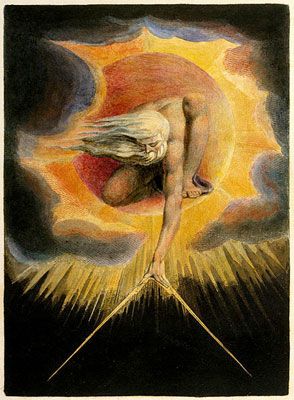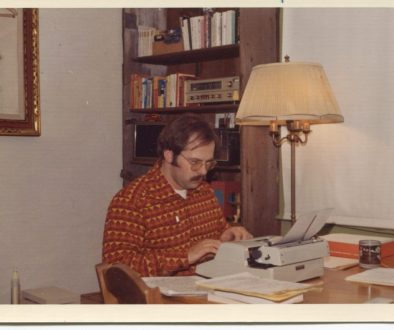“Underland: A Deep Time Journey” by Robert Macfarlane
I grew up in South Dakota’s Black Hills, a small mountain range that looks as if it had gotten pushed up out of the flat prairie earth that spreads out endlessly on all sides. The Black Hills instilled a lifelong love of mountains and forests in me, which must have been on my barely conscious mind when, as a freshman at the University of South Dakota, I enrolled in a geology course.
Yet another more powerful influence had to have been the summer I spent guiding tours through Sitting Bull Crystal Caverns, a diminutive but startlingly unique Black Hills cave. To enter, one must descend five flights of wooden stairs,172 feet to reach the cave proper, where one sees for the first time its ceiling, covered with thousands of domes bearing translucent dogtooth spar crystals clustered on the limestone. It’s one of only a few caves in the world where dogtooth spar crystal is found.
I was fifteen years old that summer, and soon became an amateur spelunker, a caver. A friend and I found another cave nearby where thousands upon thousands of bats clinging upside down to the ceiling, depositing a layer of bat guano three or four feet deep below as they slept. We found other spelunkers and explored other caves with them. I remember one where we crawled through a tunnel perhaps a hundred feet long and as wide as my shoulders. As we crawled, it grew narrower, narrower until it opened into a room the size of a concert hall. Problem was it ended abruptly about thirty feet above the rock floor. Thankfully, I spelunked with a carbide lamp attached to my head and saw the drop-off before I dropped off.

But I write not to regale you with childhood memories (well, maybe; you’ll have to decide) but to try to explain why I was so drawn to Robert Macfarlane’s book, Underland. Macfarlane posits that we don’t pay much attention to the world just beneath the earth’s surface, and I concur. There is a lot going on down there.
Some of it is of natural occurrences, for example the aforementioned caves, harrowed out of limestone by underground rivers, which Macfarlane finds on continent after continent, without ever getting to North America. The discovery of caves dates back many thousands of years, in myth, legend and fact, for example the wall paintings at Chauvet cave in France and the catacombs beneath Paris, filled with the bones of six million souls dating back to the 1700s. There are caves explored and unexplored, the latter sometimes because of danger but also because they are thought to be the realm of the devil.
Yet quite a lot of this “what goes on” in the underland is because of humans, and it is here where Macfarlane’s explorations become more fascinating and, if I may say so, intellectual. Caves and underground tunnels generate a great deal of humankind’s current activities—more than you might think—such as the British physics laboratories three thousand feet deep which provide the absolute darkness in which to explore the characteristics of dark matter.
A more recent type of burial rite concerns radioactive waste, with its ability to “live” for hundreds of thousands of years. A grave is being prepared for thousands of tons of spent high-grade nuclear waste, fifteen hundred feet deep into solid granite on Olkiluoto Island, off the coast of Finland. Once stored in holes bored into the rock, the uranium will then be sealed in concrete. Similar activities, Macfarlane explains, are progressing in other countries, all of whom hope to spare our societies and those of our offspring from the radioactivity, which will hopefully have cooled and become non-lethal over the next hundred thousand years or so. What’s more hoped-for is that no human will ever find the place, named Onkalo – which in Finnish is “hiding place.”
Underland is a thoughtfully, elegantly written work which kept me rapt and eager to return to reading it. Each story occurs in a different geography, each with its own distinct time frame from ancient to contemporary, with others in between. As interesting as these explorations are, Macfarlane’s geological, anthropological, archetypal, mythological, historio-philosophical exploration of what the underland signifies in human consciousness was of far greater interest to me.

Macfarlane’s book’s subtitle is “a deep time journey,” and rightly so. Deep time as a concept was conceived by a Scots geologist named James Hutton in the mid-eighteenth century and revived by John McPhee, IMO the greatest journalist of at least the twentieth century, in his 1981 book Basin and Range.
Macfarlane embraces the notion close to his writer’s heart by saying, “Deep time is measured by . . . epochs and aeons, instead of minutes and years. Deep time is kept by stone, ice, stalactites, seabed sediments and the drift of tectonic plates.” As McPhee pointed out in his New Yorker article and subsequent book, we can see deep time when we pass by a mountain which has had its side shaved off by construction, typically a road or highway. You can see this for yourself by watching Emily Graslie’s fascinating three-part Prehistoric Road Trip video (Emily, by the way, grew up in Rapid City, South Dakota, as I did).

But to my mind, deep time can also be experienced in thought constructs. Have you ever had a moment when some random event from your memory flashed into your conscious thoughts for no apparent reason at all? Deep time. Or were you reading a book or watching a movie when some something set off a thought you might never have consciously thought to have, or were in that moment coalescing into a thought you could never have consciously had, for any reason at all? Deep time. I think music evokes even more deep time memories.
Of course deep time memory is an aspect of our deeply imprinted consciousness, the workings of which we hardly know anything at all. Some call it lizard brain, but I think it’s much, much more than that. It’s the consciousness that extends from our evolution from primates to our archetypes to our myths and beliefs, all the way to our nerve endings. In our deep time memory we know all of this and more. So much is stored there, yet most of it is unknown to our daily brain. It seems we humans have recreated this selfsame process in the way the internet works. All that unassimilated deep time un-consciousness waits to see if we will discover it, either on purpose or, as it more commonly shows up, by sheer chance.

This Armillaria solidipes, honey fungus, discovered in Oregon, is the largest living organism.
It was deeper into deep time that I had hoped Macfarlane would take us in exploring the underland. He came close when he wrote about how the trees in a forest are able to communicate with one another through their roots using Armillaria solidipes, honey fungus, like a wi-fi network. Can there be any doubt that we life forms on earth are not all connected?
While every story Macfarlane told was intriguing in its own right I wished he had cohered them, like the honey fungus does for the trees, into a greater understanding of deep time. A tall order, to be sure, because it seems deep time is everywhere, just as measured time is, in us and around us, whether we are conscious or unconscious of it, just as we know but are utterly unaware of the trillions of neutrinos passing through our bodies every day. Neutrinos come from deep space, from the sun, which is the mythic, archetypal symbol of consciousness. So . . . could not neutrinos also be particles of deep time?




